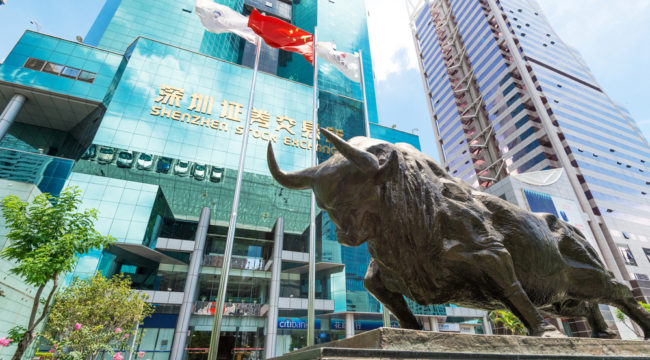China’s Coming Meltdown Will Rapidly Spread to U.S.
The coming credit crisis in China is no secret.
China has $1 trillion or more in bad debts waiting to explode. These bad debts permeate the economy.
Some are incurred by Chinese provincial authorities trying to get around spending limitations imposed by Beijing. Some are straight commercial loans on bank balance sheets. Some are external dollar-denominated debts owed to foreign creditors.
The most dangerous type of debt involves a daisy chain of insolvent corporations buying debt from each other.
A single cash advance of $100 million can be passed from corporation to corporation in exchange for a new promissory note, used to extinguish an old unpayable promissory note. Repeated enough times, the $100 million can be used as window dressing to prop up $1 billion or even $2 billion of bad debts.
These kinds of accounting tricks will land you in jail in the U.S., but it’s an accepted practice in China as long as the corporate CEO is a “Princeling” (a politically connected Communist Party insider descended from the old guard) or an oligarch willing to pay bribes.
This state of affairs has existed for years. The question investors keep asking is, “How long can this last?” How long can the daisy chain keep operating to gloss over a sea of bad debt and give the Chinese economy an appearance of good health?
Well, the answer is the Ponzi will not likely last much longer. Even compliant Chinese regulators are starting to blow the whistle on bad loans and the banks that cover them up. So the good news is that China is starting to address the problem. The bad news is that if China gets serious about cleaning up bad debts, their growth will slow significantly and so will world economic growth.
That’s bad news for global stock markets.
Essentially, China is on the horns of a dilemma with no good way out. On the one hand, China has driven growth for the past eight years with excessive credit, wasted infrastructure investment and Ponzi schemes like wealth management products (WMPs).
The Chinese leadership knows this, but they had to keep the growth machine in high gear to create jobs for millions of migrants coming from the countryside to the city and to maintain jobs for the millions more already in the cities.
The Communist Chinese leadership knew that a day of reckoning would come. The two ways to get rid of debt are deflation (which results in write-offs, bankruptcies and unemployment) or inflation (which results in theft of purchasing power, similar to a tax increase).
Both alternatives are unacceptable to the Communists because they lack the political legitimacy to endure either unemployment or inflation. Either policy would cause social unrest and unleash revolutionary potential.
The Tiananmen Square protests and massacre of 1989 did not start out as a liberty movement, although that’s how they are remembered in the West. It started out as an anti-inflation protest, and that’s how the Communists remember it.
Instead of these unpalatable extremes, the Chinese leadership is trying to steer a middle course with gradual financial reform and gradual limits on shadow banking. I’ve previously predicted that this gradual policy would not work because the credit situation is so extreme that even modest reform would slow the economy too fast for comfort.
That’s exactly what has happened.
China has already flip-flopped and is easing up on financial reform. That works in the short run but just makes the credit bubble worse in the long run.
China may soon resort to a combination of a debt cleanup and a maxi-devaluation of their currency to export the resulting deflation to the rest of the world. When that happens, possibly later this year in response to Trump’s new trade war with China, the effects will not be confined to China.
A shock yuan maxi-devaluation will be the shot heard round the world as it was in August and December 2015 (both times, U.S. stocks fell over 10% in a matter of weeks). The trade and currency wars are far from over.
Get ready for more volatility and drawdowns in U.S. stocks.
Regards,



Comments: